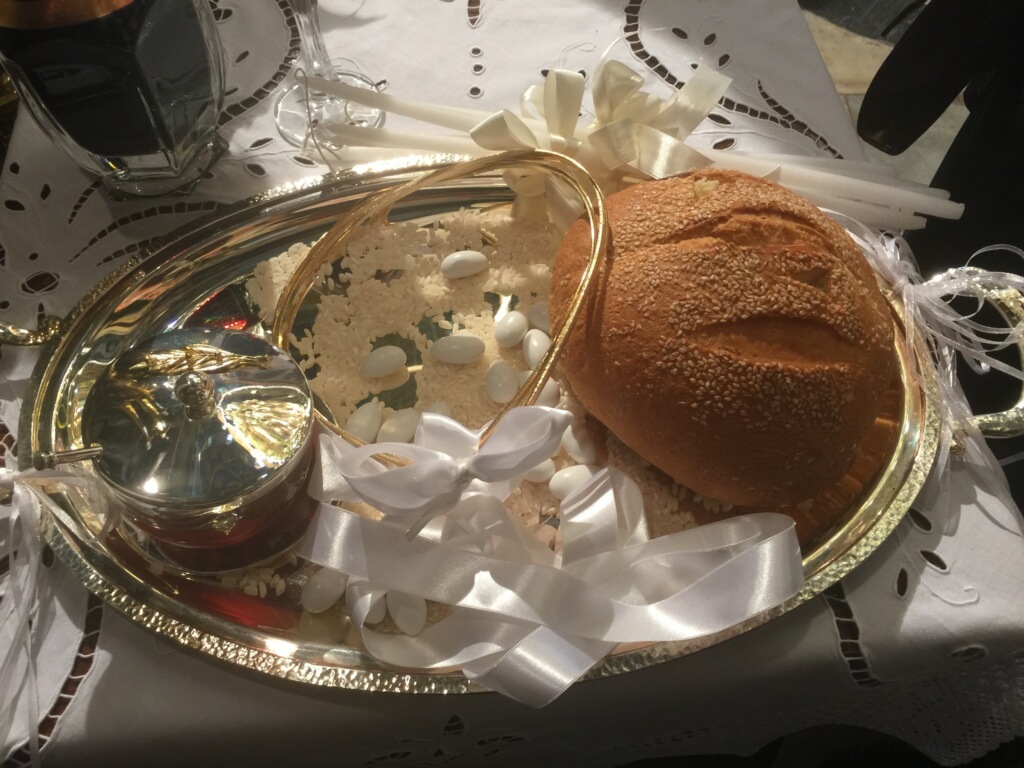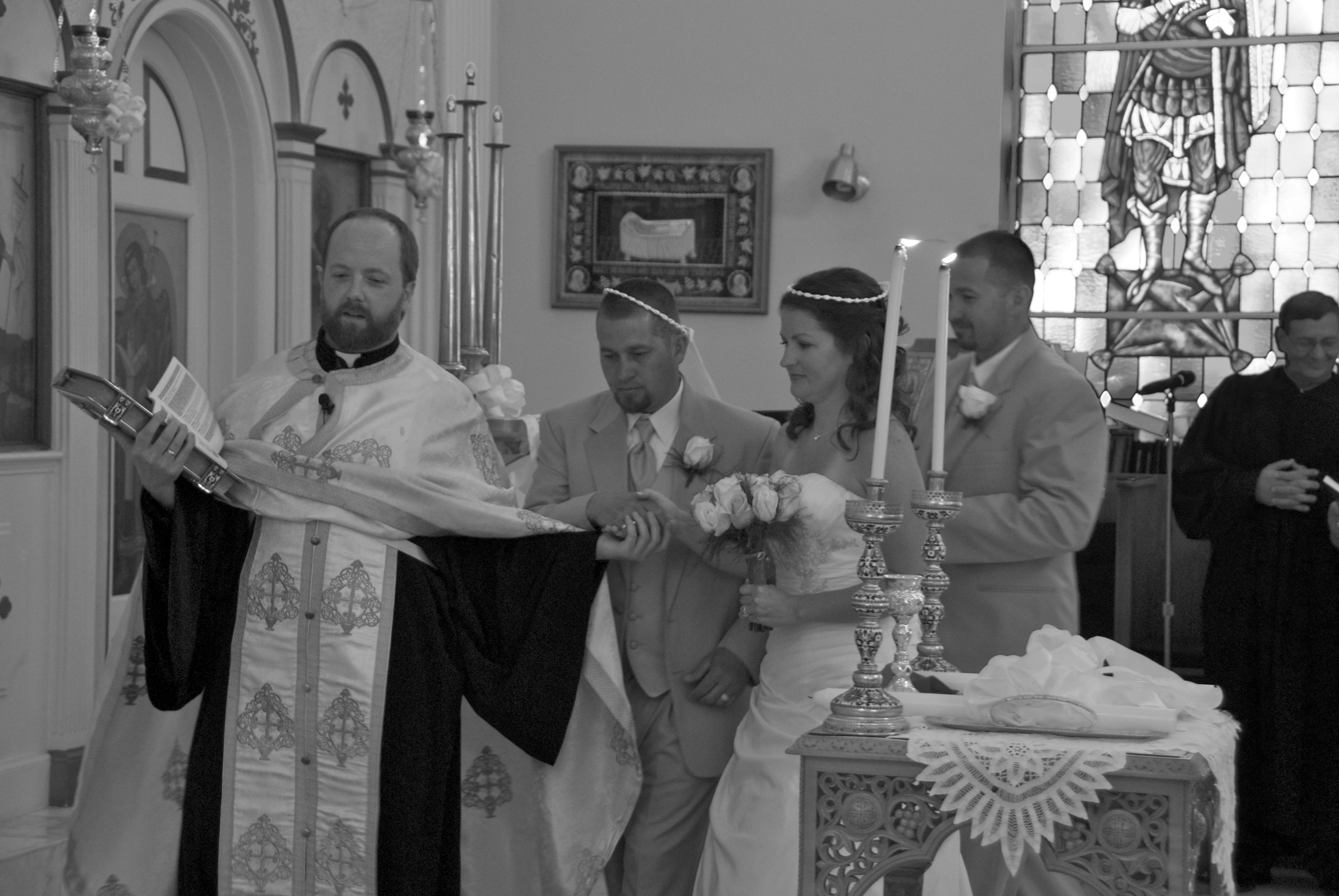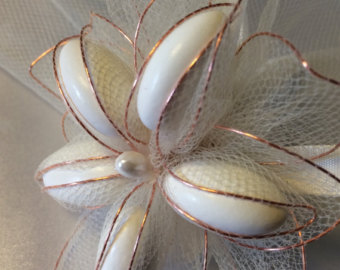Greek Orthodox weddings are beautiful and symbolic ceremonies, steeped in ritual and tradition. It is a Sacrament – and unlike other religions, has not been truncated or altered throughout the history of time. The couple is led through the ceremony by their priest and their sponsor (koumbaros/koumbara). Most rituals are performed three times to represent the Holy Trinity. The Greek Orthodox wedding ceremony lasts about 40 minutes and may be conducted in a combination of Greek and English. The bride and groom are not married by a priest, but are considered married by God. Therefore, wedding vows between the couple are not part of the service. The content and wording of the service cannot be changed.
The Ceremony

The service is conducted around a small table on which the wedding crowns, the book of Gospels, two wedding rings, a cup of wine and two white candles have been placed. These objects are used symbolically throughout the service.
In the first part of the service, the couple becomes betrothed by the church. The priest blesses the rings and puts them on their right hands and the sponsor exchanges the rings three times. The exchange signifies that in married life the weakness of one partner will be compensated for by the strength of the other. Each will be enriched by the union.
Then the wedding ceremony takes place. The bride and groom each hold a lighted candle during the service symbolizing the oil lamps of the five wise maidens who waited for Christ the Bridegroom (Parable of the Ten Maidens in the Gospel of Matthew).
The couple joins hands as their wedding crowns (Stéfana) are placed on their heads. The blessing of God is invoked upon the couple as the crowns are exchanged three times between their heads by the sponsor. The wedding crowns are the signs of glory and honor with which God crowns the Bride and Groom during the sacrament. The Bride and Groom are crowned as king and queen of their home, which they will rule with wisdom, justice, and integrity.
After the crowning, the priest reads two scriptures – Epistle of St. Paul to the Ephesians and the story of Christ at the wedding in Cana when he changed water into wine. The bride and groom share a common cup of unconsecrated wine, symbolizing the sharing of all that life will bring – joys, sorrow, love and pain.


The priest leads the couple, hands joined, in a circle around the holy table as they take their first steps as husband and wife. The circling around the table signifies the promise of the husband and wife to preserve their marriage bond until death parts them. At the end of the ceremony, the priest removes the crowns and charges the newlyweds to go forward in peace. The Bride and Groom are proclaimed husband and wife, at the conclusion of the service.
Wedding Favors
As you leave an Orthodox wedding you will be given a little favor or you might find it on your plate at the reception. These bombonieres are an Eastern Orthodox tradition over 2,000 years old. The favors are filled with koufeta (white Jordan almonds) and are given as tokens of good fortune and happiness. The white of the sugar coated almonds symbolizes purity; the egg shape represents fertility and the new life that begins with marriage. The hardness of the almond represents the endurance of marriage; the sweetness of the sugar symbolizes the sweetness of future life. The odd number of almonds is indivisible, just as the Bride and the Groom shall remain undivided.
